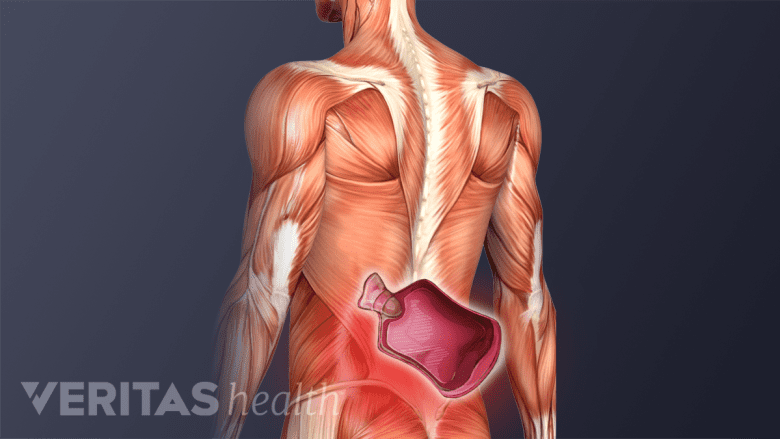Before taking steps for long-term rehabilitation and pain control, it is often necessary for a patient to get relief from a flare-up of intense, debilitating pain associated with lumbar degenerative disc disease.
Once the pain is under control and reduced to a more tolerable level, patients can then perform everyday activities and engage in active physical therapy and exercise to improve the longer-term course of degenerative disc disease.
In This Article:
Quick steps to control pain include:
Ice Application

Ice packs provide immediate pain relief by constricting blood vessels and numbing the area.
Applying ice to muscles that are painful after activity or exercise will help control pain and inflammation. Using ice packs on the lower back for 10 minutes can be a cost-effective, easy approach to take at home. Having ready-made packs in the freezer will allow patients to grab one quickly when needed.
Watch Video: How to Make a Gel Ice Pack
Heat Application

Heat application on the lower back boosts circulation, reduces spasms, and improves mobility.
Alternatively, a heating pad or moist heat compresses (a moistened towel warmed in a microwave is easy to make) can relax muscles or joints around the degenerated disc that have tightened up. Applying heat will warm up the lower back muscles, make stretching and exercise easier and decreasing the chance of injury.
Over-the-Counter Medication
NSAIDs reduce pain by calming inflammation in the nerves and soft tissues.
Taking over-the-counter medication such as NSAIDs (non-steroidal anti-inflammatory drugs, e.g. Advil or Motrin) can decrease the inflammation around the degenerated disc. Pain can also be treated with acetaminophen pain relievers such as Tylenol.
For pain that doesn't respond to over-the-counter medications and home remedies, stronger anti-inflammatory medications can be prescribed (such as COX-2 inhibitors) or administered directly into the low back (e.g., epidural injections) for pain relief.
Patients can also take advantage of alternative therapies like massage therapy, acupuncture or chiropractic manipulation to relieve tightness and decrease pain. Often patients will find that a combination of therapies works well, such as spinal manipulation, NSAIDs, massage therapy, and ice and heat.
Once the pain is at a tolerable level, patients then have a lot of options in terms of what they can personally do to prevent and/or minimize future flare-ups of degenerative disc related pain.

